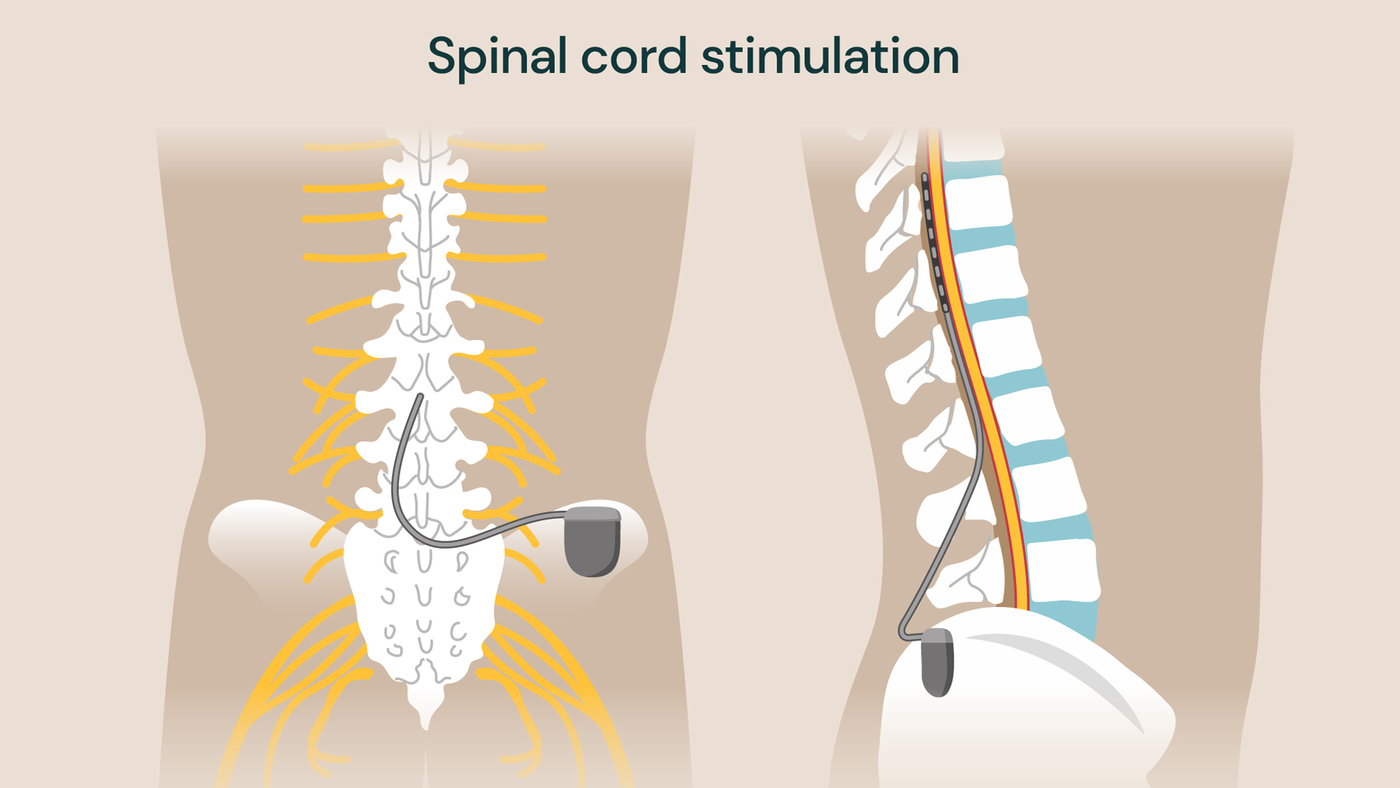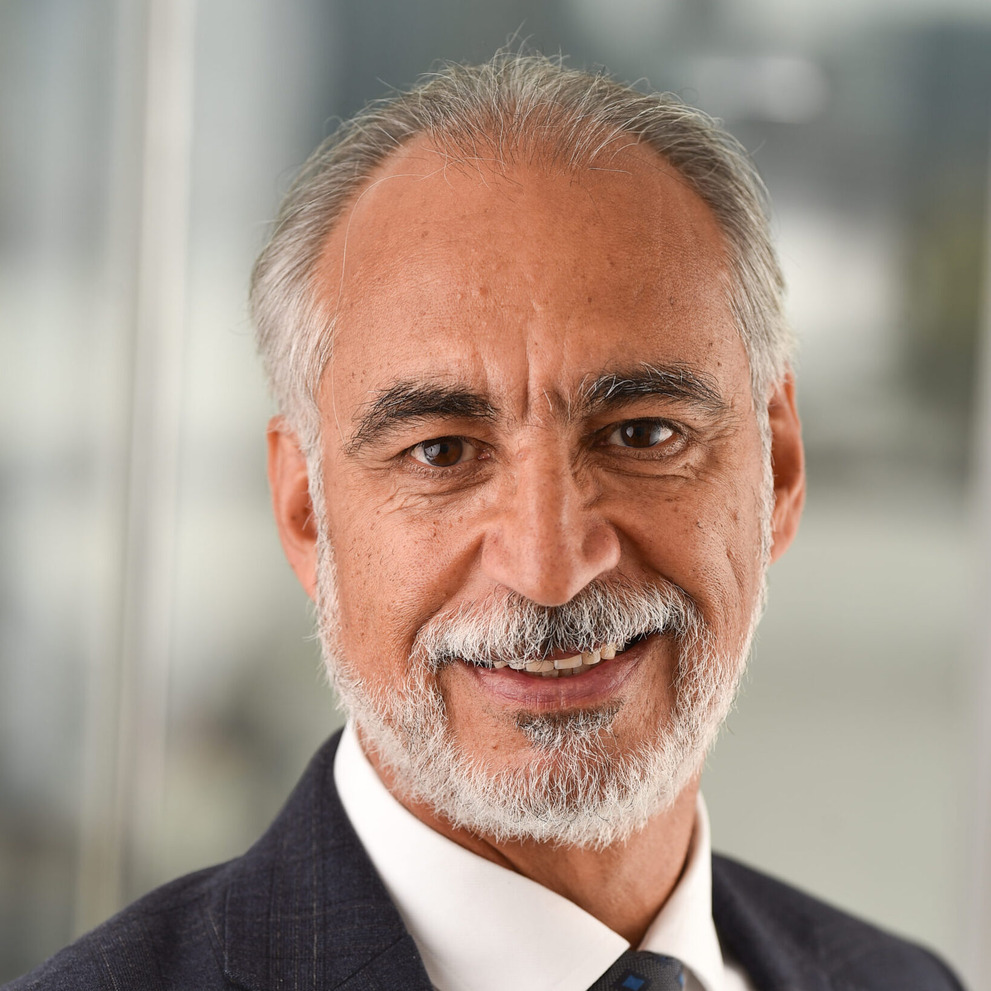Chronic pain affects around 1 in 3 people in the UK, with about 1 in 6 people experiencing chronic pain so severe that it affects their participation in regular daily activities. The most severe cases of chronic pain can leave people bedbound, unable to work, and relying on addictive opioid medications to provide pain relief. To help people with chronic pain get back to normal life, consultants at St Thomas’ Hospital offer spinal cord stimulation, a life-changing procedure which treats chronic pain.
What is chronic pain?
Chronic (long-term) pain can occur in any part of the body and is defined as pain which lasts for longer than 12 weeks, or lasts longer than the natural healing time for the specific type of injury. The cause of chronic pain depends on where in the body it occurs, but common causes of chronic pain include degenerative changes in the spine, accidents and injuries, or poor healing after surgery. Some other types of chronic pain, such as migraines, can occur due to a genetic predisposition.
Chronic back pain is thought to affect about 10 million people in the UK, making it one of the most common types of chronic pain. In fact, figures show that it contributes to 11% of all disability in the population, keeping people out of work and often unable to leave the house. In the UK, 2.6 million people visit the GP each year for lower back pain.
There are several causes of chronic back pain but it’s often triggered by heavy lifting which damages back muscles, spinal ligaments and spinal discs. Chronic back pain can also be caused by accidents and falls, or by poor posture over a long period.
The recent societal shift to working from home is thought to have increased this problem, with more people experiencing pain due to weakened, unused muscles, increased stiffness, and decreased flexibility as a result of a more sedentary lifestyle.
Common pain management options
If you have chronic pain, you are likely already reliant on pain relief stronger than paracetamol to help manage it. Patients with chronic pain have typically tried a combination of treatment options, including non-steroidal anti-inflammatory drugs (also called NSAIDs), epidural steroid injections, physical therapy, and opiate pain relievers (including morphine).
Finding what works for you depends on the type of chronic pain you have, and what is causing it. It may also be that a combination of the above pain management options is required to make a difference to your pain level. Sometimes, for reasons often unknown, these forms of pain relief have no effect at all, or they cannot provide a level of pain relief high enough to make a difference. In these cases, our pain management specialists may recommend spinal cord stimulation to you.
Dr Adnan Al-Kaisy, consultant in pain medicine at St Thomas’ Hospital, has an international reputation as a leading expert in pain management. Dr Al-Kaisy led the first multicentre and multinational study on the safety and success of spinal cord stimulation for patients with failed back surgery syndrome (spinal pain with an unknown cause which surgery doesn’t help). He has a special interest in spinal cord stimulation, and can advise you on your best options for the management of chronic pain.
What is spinal cord stimulation?
Along your spine are nerves that transmit pain signals, and spinal cord stimulation works by targeting these nerves to block them from sending pain signals to your brain. “The term ‘spinal cord stimulation’ is nothing new,” explains Dr Al-Kaisy. “The technique has been around since 1967, but advancing technology in recent years has given us a better understanding of how we can use it to treat different pain conditions.”
The Pain Management and Neuromodulation Centre at St Thomas’ Hospital is home to the largest pain centre in the world. We’re proud that our hospital pioneered spinal cord stimulation, and we’re one of just 5 specialist centres in the country that offer the treatment, continuing to regularly pioneer new techniques in the field.
Spinal cord stimulation involves delivering small electrical currents to your spinal cord through electrodes which have been implanted in your spine. These electrical currents block the pain signals, reducing or eliminating the pain you feel.
To deliver these electrical currents, a very small, specialised wire is inserted into a part of your spine called the epidural space. This area is very close to the nerves, and the exact location of the wire will depend on where you experience pain, as different nerves in your spine are responsible for the pain you feel in different parts of your body.
Spinal cord stimulation is a 2-stage procedure. The first part is a trial period, where a specialised lead is inserted into the epidural space under X-ray guidance. Once the lead advances to the affected part of the spine, it is attached to the skin and connected to an externally powered battery. The trial lasts for up to 2 weeks and, if the pain intensity drops by more than 50%, the second stage involving implantation of the battery powered generator will be considered.
During second stage of spinal cord stimulation, you will need to undergo a short procedure in which a small incision is made in your lower back. Through this incision, the surgeon inserts the wire and implants a matchbox-sized battery powered generator. This generator delivers the treatment, sending electrical currents through the small wire to block your pain signals.

Spinal cord stimulation shown with the implanted electrodes attached to the spine, and the generator device at the base of the spine
“You will be provided with a remote to control the stimulation of the spinal cord to reduce your pain,” says Dr Al-Kaisy. “You can turn the spinal cord stimulation on and off according to when you feel pain so essentially, you will control the pain, rather than the pain controlling you.”
Most generator devices used in spinal cord stimulation rely on rechargeable batteries, which you can charge every few days by touching an antenna on the battery to charge it through your skin. Other non-rechargeable batteries can last for up to 5 years before they need replacing with a small, quick procedure. Our pain management consultants will advise you which type of generator and battery is your best option.
Types of pain treated by spinal cord stimulation
Our pain management specialists at St Thomas’ offer spinal cord stimulation to patients with a range of chronic pain, including:
- back and neck pain
- leg and upper limb pain
- nerve pain
- facial pain
- cluster headaches and migraines
- bladder and pelvic pain
- interstitial cystitis
- pain following hernia repair operations
However, there are some types of chronic pain which are not suitable for treatment with spinal cord stimulation. If you have localised knee, hip or joint pain, you will not be recommended for the procedure, as these are types of mechanical pain resulting from the joint itself. In these cases, blocking pain signals with spinal cord stimulation will not prevent you from feeling pain.
What are the benefits of spinal cord stimulation?
The benefits of spinal cord stimulation are clear from the experiences of patients at St Thomas’ Hospital. Dr Al-Kaisy and the pain management team followed 21 patients over 3 years after their procedures in which they had the devices implanted. They found that patients’ pain intensity had reduced by 80% with spinal cord stimulation, with 75% of patients able to return to work. Further to this, 90% of their patients had stopped taking opioid medication after having had the procedure.
“The complications of this procedure are very small, while the patient satisfaction and social aspect is high,” says Dr Al-Kaisy. “The procedure is also minimally invasive, simple, and reversible if the pain goes away in the future, and you wish to have the device removed.”
Get in touch
Our pain management consultants at St Thomas’ Hospital can offer spinal cord stimulation to most patients experiencing chronic pain above the age of 18. This life-changing treatment can be performed on an outpatient basis and provides pain relief for an unlimited period of time.
To learn more about spinal cord stimulation please contact our team.
